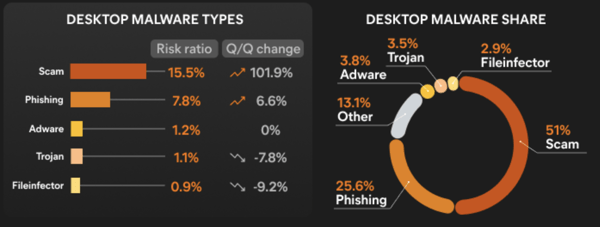 New analysis of the second quarter of this year makes it clear that individuals and organizations alike are at an increasing risk of web- and email-based scams.
New analysis of the second quarter of this year makes it clear that individuals and organizations alike are at an increasing risk of web- and email-based scams.
According to cybersecurity vendor Avast’s Q2/2023 Threat Report, the world is not a better place this quarter; their Global Risk Ratio (which looks at the number of users that were subject to a potential attack that was stopped versus the number of overall users protected by Avast) jumped 13% in a single quarter, while the volume of attacks increased by 24%.
Two of the most prevalent attack types were scam and phishing emails, accounting for more than 75% of desktop malware-based attacks, and representing the vast majority of the Global Risk Ratio.

Source: Avast
Avast points out that many of the attacks are focused on individuals, indicating that the “B2C” side of the cybercrime economy is growing as new players enter the market looking for a means of attack with the lowest perceived risk (with taking down an organization’s network putting them far more at risk than, say, taking grandma for $300).
But even so, this growth is also a bit prophetic; with more threat actors pouring into the cybercrime “funnel”, there will be more who desire a larger take per attack and will look to targeting organizations to allow their return on investment to be measured in millions of dollars instead of hundreds.
 Here's how it works:
Here's how it works:




